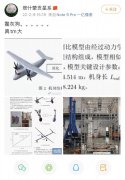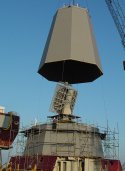The domes are mostly satcoms.
Note that Early Enterprise used a very early AESA design, forgot the name of it. However, the concept was way too advanced for the technologies at that time so it was mainly experimental and abandoned.
Later Enterprise removed the early AESA and replaced it with the SPS-48, which is a frequency scanning planar radar. This radar electronically scans vertically and is rotated horizontally for 360 degree coverage and 3D acquisition. It works in the same principle as the Russian Fregat radars, except its much bigger and more powerful. This type of radar is simple and reliable, Soviets then Russians, and the PLA also has their land equivalents used as volume search radars. Nimitz continued to use the SPS-48, and there is no new radar change with US carriers until the Ford class. US did not choose to adopt air defense radar like AEGIS SPY-1 into aircraft carriers, and fixed 3D phase array didn't arrive until the Soviets with the Kiev and Kuznetsov classes with the Mars Passat. However Mars Passat radar proved to be troublesome, so they replaced it with a large frequency scanning planar radar, forgot the name of it, which also ended up inherited into the Indian Navy carrier.
Ford used both the SPY-3 and SPY-4 AESA radars but the lead ship will be the only one that will equip it. The next ship will equip the EASR, which is the baby version of the SPY-6 that is rotated around, along with the SPQ-9B, which is a small X-band planar radar that is also mechanically rotated. The second setup will be much cheaper, and both SPY-3 and SPY-4 seems to have a troubled development, and their use of Gallium Arsenide also makes them outdated compared to Gallium Nitride radars. So at this point, both SPY-3 and SPY-4 are dead ends.
I am not sure the amount of satcoms shown on the 003 island is all there is to it, as both the Liaoning and Shandong seems to have more. Its likely more will spout up as the ship is being fitted.



